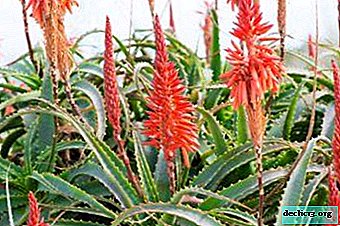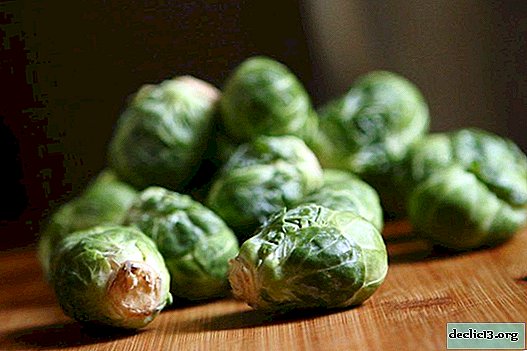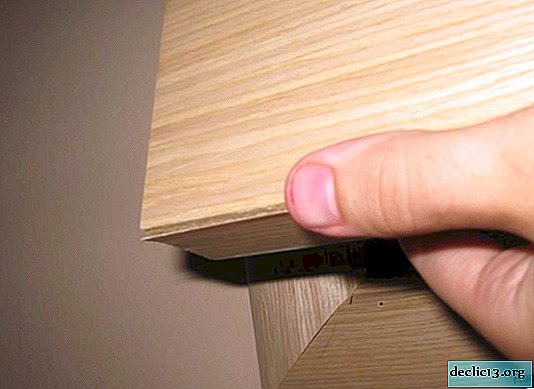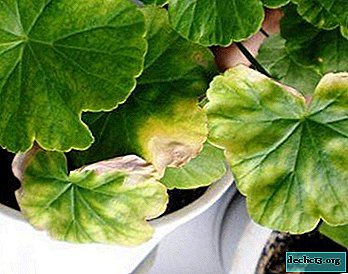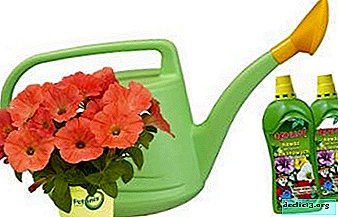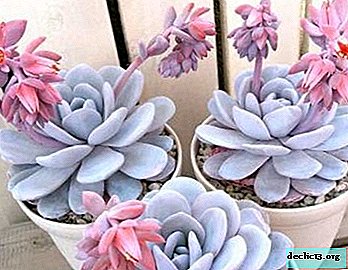The secrets of a good harvest of radish. How to grow a vegetable in open ground, a greenhouse and at home?
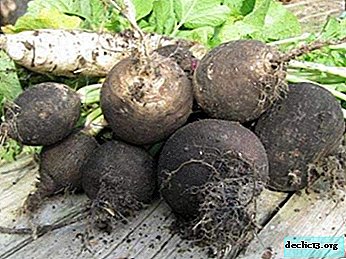
Radish is a well-known root crop, which for most Russian summer residents for some reason did not get a place in the garden. And in vain!
Radish has a rather specific taste, but it is a storehouse of health. How to grow this healthy vegetable in your area?
Features of crop rotation, how to correctly choose a variety and where to buy, instructions for growing and maintaining in a greenhouse, open ground and at home - all of this and much more will be discussed in this article.
Crop rotation features
- Radish will feel great next to tomatoes, carrots, cucumbers. The neighborhood with beets, spinach, pumpkin, parsnips, cabbage, and zucchini is well tolerated.
- Onions, cabbage, hyssop, strawberries - the worst of the "neighbors" for radish.
The best place for a bed with a root crop will be the land where they were grown:
- potatoes;
- cucumbers
- greenery;
- pumpkin;
- Tomatoes
- horseradish;
- carrot.
How to choose the right variety for growing?
 You need to choose a radish variety, focusing on the terrain conditions and the desired harvesting period. It should be noted that there are several types of radish:
You need to choose a radish variety, focusing on the terrain conditions and the desired harvesting period. It should be noted that there are several types of radish:
- black
- white
- green
- red.
By maturity, early, middle and late varieties are distinguished:
- The ripening varieties include Odessa 5, Summer Round White, Green Goddess, Sudarushka.
- Varieties of radishes with medium ripening: "Dragon", "Wonderful", "Chinese", "Black winter".
- Late ripening - "The Doctor", "Gayvoronskaya 27", "Winter Round White".
Where is planting material sold?
You can buy seeds at any flower shop or hypermarket. Of course, it is most profitable to purchase seed from producers. The price of radish seeds depends on the required volume and producer. For example, a colored bag (euro) weighing 1 g of seeds from a Zedek producer will cost about 10 rubles, in a white bag the same 1 g costs 5 rubles. (prices are for August 2019). Oilseed radish in the packaging of 1 kg. the same manufacturer costs 170 rubles for August 2019.
Step-by-step instructions for growing and caring
Purchased in the store or your own seeds need to be prepared for planting. For this, the seed material is kept for 24 hours in a weak solution of potassium permanganate.
In the greenhouse
- Usually in greenhouses sown radish in February-May and September. Then the harvest will be in April-June and October. But in heated complexes you can grow this vegetable all year round.
- In early spring, experts advise additional heating of the greenhouse to produce large fruits. A temporary short-term drop in temperature will not do much harm.
If the temperature regime does not exceed +10 ° C constantly, the harvesting period will increase by two weeks.
- Seeds are sown in carefully dug up soil in short beds (distance up to 30 cm). To get the crop gradually, seeding can be done weekly.
- When the first seedlings appear, the radish needs to be thinned so that there is a distance of at least 5 cm between the plants. After a month, re-thinning is necessary.
- Watering the root crop is carried out weekly, avoiding the complete drying out of the soil. For each square meter, you need to pour up to 12 liters of water. If you do not observe the regular moisture of the soil, the tubers will crack. Mulching will help to maintain moisture in the soil.
- Top dressing of early varieties of radish is carried out twice: with the appearance of cotyledon leaves and after a week. Fertilizers use only nitrogen due to the short ripening period. Varieties of the late ripening season are fed weekly with complex mineral fertilizers.
Manure as a top dressing radish is not suitable. Its use leads to the branching of tubers.
Twenty days before harvesting, top dressing should be stopped.
- During the growing season, plants are spudded three times: the first time the soil is cultivated to a depth of 4 cm, the second is up to 8 cm, the last is up to 10 cm.
- In summer, the greenhouse where the radish grows needs to be ventilated, avoiding drafts.
In the open ground

- Radish is beautiful for its resistance to frost. The first shoots may appear when the temperature warms up to +3 ° C. They are resistant even to short-term frosts up to -4 ° C. Adult plants will not die even at -6 ° C.
- When cultivating a radish in a seedling way, it is necessary to plant seeds a month before the intended planting in the ground.
- Before planting seeds or seedlings, the bed must be dug up and leveled with a rake. It is recommended to plant radish in loamy soil enriched with humus or humus. Sandy soil is also suitable. Acidic soils must first be liming.
- Sowing in the soil is carried out according to the scheme of 8 cm to 35 cm. The depth of the grooves should not exceed 2 cm. 3 seeds are placed in each cell. Grooves sprinkled with soil. In case of insufficient humidity, the garden is watered. In the absence of frost, the first shoots appear after a week.
- An important point in the care for all root crops is thinning. You need to conduct it twice: when two sheets appear and after a month. With uneven seedlings, the removed plants can be transplanted into empty places. Radish withstands transplanting well.
- Early ripening varieties require moderate weekly watering. Later varieties are watered up to four times during the growing season.
The radish does not tolerate severe drought, if after such a period it is abundantly watered, the root crop will crack.
- To form the fruits of the correct form, the plant is slightly swayed, thereby breaking off the lateral roots. After this treatment, the radish needs to be bored, then the pulp of the root crop will be tender.
- Periodically, weeds need to be removed from the beds. During the growth of the radish, three times the soil must be loosened. The first time the treatment is carried out to a depth of 4 cm, the second - up to 8 cm, the last - up to 10 cm.
- Topping up the radish is carried out, if necessary, only with nitrogen or complex fertilizers. Early ripe species are fed twice: the first time when the cotyledon leaves are expanded, the second time a week after the first feeding. Late ripening radish is fed weekly. Fertilizing must be stopped twenty days before the harvest.
Houses

- For indoor growing conditions, it is necessary to choose early ripening radish varieties resistant to flowering and drought.
- To get a crop in the apartment, you need to buy a pot with a depth of 20 cm or more. To prevent stagnation of moisture, drainage holes are made in it (if not), a layer of expanded clay is laid on the bottom. Seeds are planted in soil with a neutral reaction.
- Soil is poured into the prepared container. In it, a depression is made up to 2 cm or a groove where planting material is sown. Sprinkle the seeds with soil and moisten with a sprayer. To create greenhouse conditions, the pot is covered with a film and placed in a dark warm place.
Attention! The pot does not need to be filled completely with soil. With the subsequent growth of seedlings, the earth will need to be sprinkled.
- The first shoots will appear within a week. When they appear, the film must be removed, and the pot should be moved to a bright and cool place. If the seeds were planted in a long balcony pot, then when two real leaves appear, the plants need to be thinned, leaving a distance between them of about 8 cm.
- As the soil dries, the soil needs to be moistened. Radish planted in fertile soil does not need to be fed.
- The main difficulty in growing radishes indoors is maintaining optimal conditions (it should be cooler at night and warmer during the day). High air temperature provokes the flowering of vegetables.
Diseases and Pests
To prevent the appearance of radish diseases, it is necessary to observe the timing of crop rotation. On the same bed, the root crop should grow every four years. Disease is promoted by high humidity of air or soil.
The most common diseases include:
- Blackleg. A fungal disease often affects seedlings. The stem of the plant at the bottom turns yellow, then blackens. After a few days, the plant breaks down and dies. There is a disease with high humidity, thickened crops, high soil acid. There is no point in fighting the disease - diseased plants are removed. It is necessary to carry out preventive measures: disinfect the soil for seedlings, liming, thin out crops.
- Downy mildew (peronosporosis) also has a fungal nature. The disease is characterized by the formation of yellow spots on the leaves, which increase in size and change color to brown. It occurs with high humidity, poor ventilation (in the greenhouse), significant temperature differences. Methods of controlling the disease: disinfection of the soil surface with copper sulfate. Chemicals can also be used.
Garden radish pests are not averse to profit from radish:

- Cabbage fly larvae damage the roots and tuber of a young plant. As a result, the growth of the radish stops, the leaves become lead-blue, wither. The best way to prevent pests is to maintain crop rotation. Throughout the spring-summer period, it is necessary to get rid of the cruciferous weeds. Of the popular methods of pest control, tobacco dust and ash treatment are widely used. You can water the seedlings with chemical agents.
- Sacral fleas - These are small bugs wintering in plant debris. Flea wintering places leave in April. On the leaves of radish beetles gnaw through many pits. Severe damage to the plant is fatal. It is possible to process seedlings for scaring away the pest with ash, or it is also possible with chemical preparations.
Secrets to Overcoming Challenges
- The first difficulty in growing crops is the timeliness of planting. Inexperienced summer residents are afraid of cold weather and delay the sowing of seeds. With an increase in daylight, the radish will go to the arrow. In the fall, do not rush. Daylight hours should decrease, and the temperature should decrease.
- Another danger to a good radish is heat. The optimum temperature for the root crop is considered to be up to +18 ° C. If the climate is hot, then the emerged seedlings need to be mulched.
- In the shaded area, normal root crops will not grow. The fruit's juiciness and taste depend on watering. To plant radish, you need to divert sunny areas.
- The abundance of natural fertilizers (manure) harms the plant. The root crop is bent, becomes tasteless, loses keeping quality.
- Lack of watering gives root crops bitterness, rudeness and an unpleasant smell. Therefore, watering early varieties should be frequent.
- Thinning of radish is carried out as early as possible. Plants should grow at a distance of 20 cm from each other. The first time you need to remove extra seedlings in the phase of the second leaf, the second - after twenty days.
- Cruciferous crops are susceptible to flea invasions. You can deal with this pest with ordinary ash. This fertilizer can be applied to the soil before sowing.
Radish collected from its site will become a useful and tasty vegetable on the table. Cultivation does not require much effort.
Observing the principles of agricultural technology, providing proper care, you can get a rich harvest that will delight the whole family all year round.



